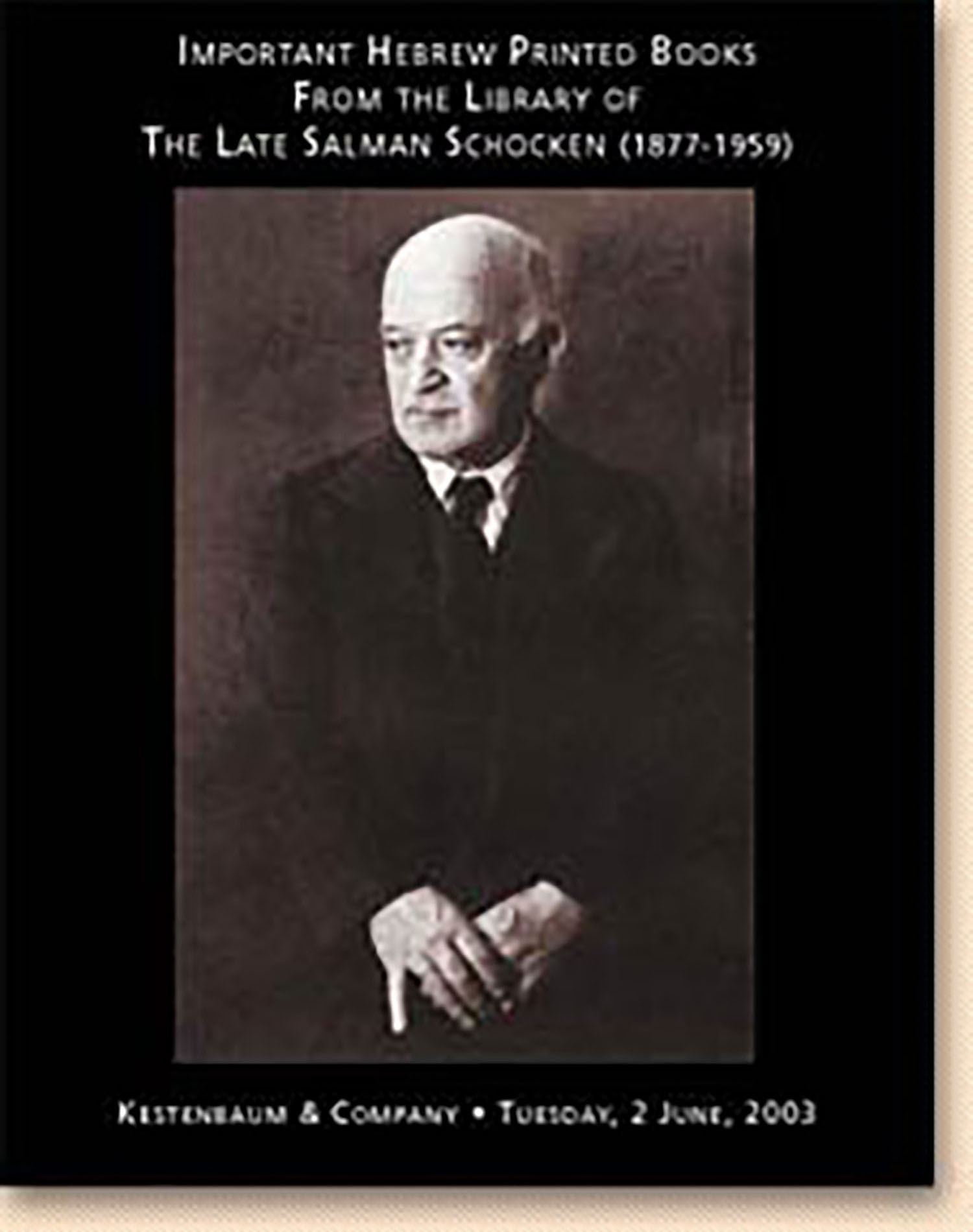Hanikra Yelamdeinu [Midrashic homilies to the Pentateuch]. Attributed to Tanchuma bar Abba

AUCTION 20 |
Monday, June 02nd,
2003 at 5:00
Important Hebrew Printed Books from the Library of the Late Salman Schocken (1877-1959)
Lot 29
MIDRASH TANCHUMA
Hanikra Yelamdeinu [Midrashic homilies to the Pentateuch]. Attributed to Tanchuma bar Abba
Constantinople: Solomon ibn Mazel-Tov 1520-22
Est: $5,000 - $7,000
PRICE REALIZED $8,000
The Tanchuma-Yelamdainu Midrashic cycle is one of the earliest collections of homilies wherein the Halacha is conjoined to the Agada. Commencing with questions of Halachic matter the discussion thereupon turns to Agada and homiletic interpretation. The name given to the work refers to the numerous homiletic interpretations quoted in the name of Tanchuma, the son of Abba, a Palestinian Agadist who lived towards the end of the 4th-century. The second name, Yelamdeinu, arises from the fact that a large number of homilies open with the formula “Yelamdeinu Rabbeinu” (“May our master teach us”).
There is some confusion among bibliographers regarding the colation of this work. Vinograd and Mehlman call for ff. 110, while Yaari called for ff. 108. On the basis of comparison with the copy at the Jewish Theological Seminary, New York, the correct pagination is most definitely ff.108. The source of the earlier confusion would seem to be the inclusion of a blank leaf between Shemoth and Vayikrah (present in this copy). There was a presumption made by an early bibliographer that the work contained a similar blank leaf between Bereshith and Shemoth and between Vayikrah and Devarim, which explains the two leaf discrepancy. However, the text of both Shemoth and Devarim begin mid-leaf, (see f.25v. and f.75v.) and so these blank leaves clearly never existed.
Y. Hacker, in Areshet vol. V, p. 480, no. 92, states that the colophon in the Schocken copy is different than the copies in the British Museum, the Mehlman Collection and Vienna.
For a comparison of this Constantinople edition to the other editions see; S. Buber’s introduction to his edition of Midrash Tanchuma, Vilna 1885
